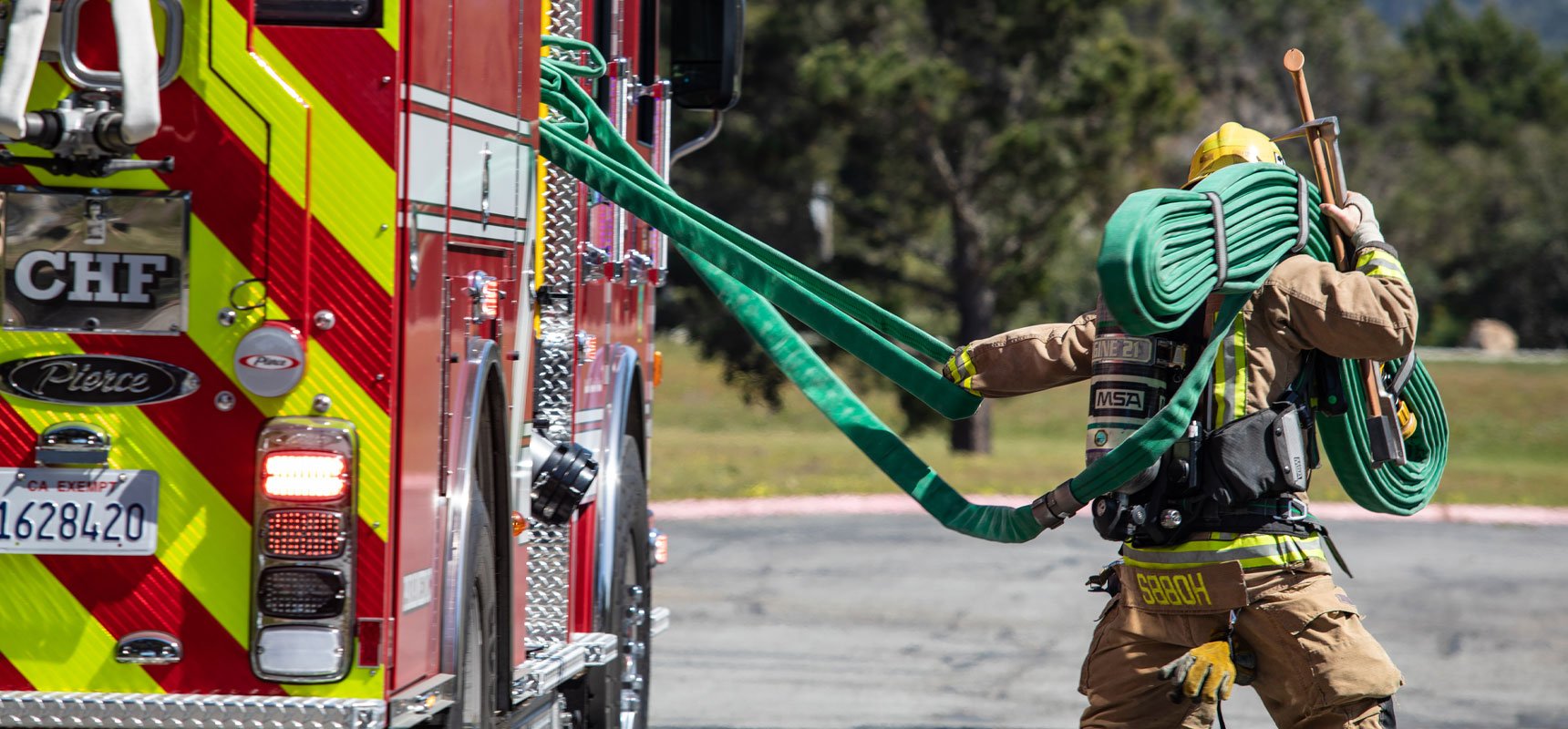
Fire apparatus hose deployment is a critical element in fireground operations. Efficient hose deployment allows firefighters to initiate fire suppression faster when every second counts. As such, taking the time to think through hose deployment as you build new fire apparatus should not be overlooked.
Below, we review the basics on hosebeds, and dive into detail on strategic hose deployment and how fire departments may consider storing and using hose on a future apparatus.
Hosebed Overview
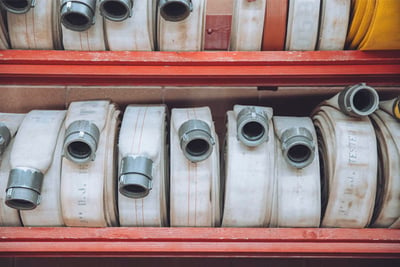
A hosebed, also known as a hose storage compartment, is the area of the apparatus that carries and deploys a fire department's hose. Hosebeds are available in a variety of sizes and can be placed strategically on apparatus based on the configuration of the entire apparatus.
Let’s review some common hosebed terms before we dive in on selection.
What is A Supply Line?
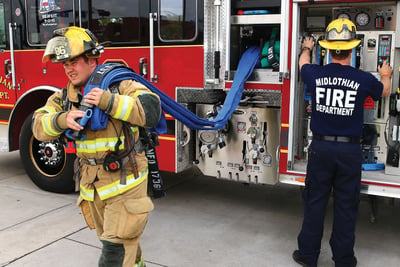
A supply line is a flexible, large-diameter hose used to transport large amounts of water from fire hydrants or other pressurized sources to a fire pump so it can be transferred to an attack hose. Supply line fire hoses can be stored flat and have fittings on both ends for equipment connections.
What is An Attack Line?
An attack line is a hose that advances towards and extinguishes the fire. While supply lines are designed to transfer large amounts of water, attack lines are made to withstand high water pressure and abrasion, giving firefighters the flexibility, range and power needed to extinguish a fire. Attack lines can be pre-connected to the fire truck's pump and ready for immediate use.
What Are Crosslays?
A crosslay is a hose storage method that allows for the rapid deployment of a hose line. Crosslays lay across the pump (hence the name), and allow hose to be stored in the open for quick and easy access. Crosslays extend across a fire truck's width, allowing hose lines to be transferable and pulled from either side of the vehicle.
What Are Speedlays?
Speedlays are typically mounted on the side of an apparatus and tucked strategically into body compartment areas. Speedlays often include a removable tray that is easy to grab and place on the ground for fast and effective hose deployment. While crosslays are accessible from both sides of an engine, speedlays may not always be accessible from both sides.
View a full gallery of images showing each of these options now.
High Hosebed vs. Low Hosebed
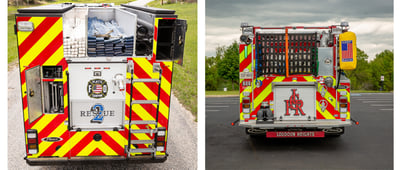 Hosebed structure and placement is often designed to optimize firefighter ergonomics and safety.
Hosebed structure and placement is often designed to optimize firefighter ergonomics and safety.
- High hosebeds are typically not accessible from ground level and require ergonomic ladders, steps, walkways and other built-in features to access. High hosebeds are more difficult to access and repack in a safe and ergonomic manner.
- Low hosebeds prove to be safer and more efficient for firefighters on scene. Low hosebeds eliminate the need for extra accessibility features by allowing firefighters to grab what they need from the ground.
Hose Storage Options
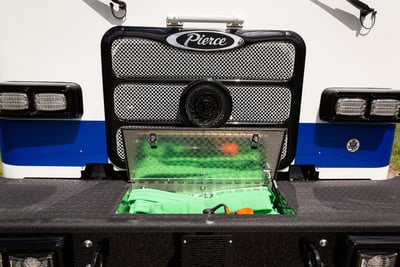 There are several tactical areas a fire department may choose for hose storage on a fire apparatus.
There are several tactical areas a fire department may choose for hose storage on a fire apparatus.
- Rear of the apparatus. Hosebeds are often found at the rear of apparatus and fire departments can choose the length, width and placement (high or low) based on their needs. Customizable hosebed dividers are also possible with rear hose storage.
- Crosslays. Hoses are stored in the open perpendicular to the fire apparatus, typically above the pump panel, at the apparatus's midpoint. This placement option allows for hose deployment from both sides of the truck.
- Speedlays. There are several storage options for speedlays: inside the transverse walkways of the apparatus, mounted immediately in front of the pump’s house just below the operator’s panel and inside removable trays that slide into compartments.
- Front bumper. Much like rear storage, a major advantage of front bumper storage is the ability for low storage, allowing for fast and safe accessibility. With front bumper storage, departments are able to choose between traditional flat hosebeds or low hosebed configurations.
- Hose packs. A hose pack is a small, bundled hose that can be carried to higher levels of a building. Also known as standby packs, hose packs are a great option for building fires where there are water connections inside the building. This allows firefighters to connect to the building’s water supply on the floor above or below a fire.
What Determines the Size and Location of Hosebeds?
Hosebed size and location depend on many factors, including the cab, chassis, pump, body and water tank selection. Mission, geographic terrain, building setback, water infrastructure and types of calls also significantly factor into hosebed location and size.
Hosebed size and location comes down to the mission of the truck and how to maximize strategic operations, speed and performance on the fire ground.
As fire department representatives consider hosebed options, they’ll want to think through fleet design and operational preferences. Setting up all fire department vehicles with the same hosebed locations can improve on-scene operations and firefighter training efficiencies. Accessing hosebeds will become second-nature because the location remains consistent across all fleet apparatus. Similarly, a fire department needs to consider its operational preferences. Some fire departments prefer running operations off the rear of the truck, while others prefer working off the side. Setting up fire trucks to match fleet and operational preferences is always a good idea.
Hose Storage Selection: Where Should You Start?
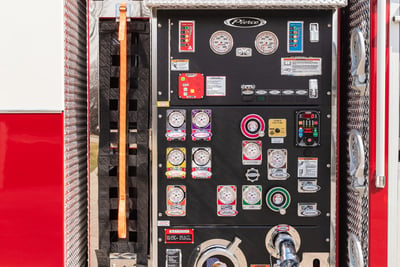 When it comes time to determine the best hose storage options, fire department representatives should keep these factors in mind.
When it comes time to determine the best hose storage options, fire department representatives should keep these factors in mind.
- What are the requirements for vehicle length and height?
- What are your operational requirements?
- What do you plan on carrying on board the fire truck?
- How much hose needs to be on the apparatus?
- How are other trucks in the department fleet designed?
- What are your safety and ergonomic requirements?
Are you team #lowhosebed? Share your story and photos below!